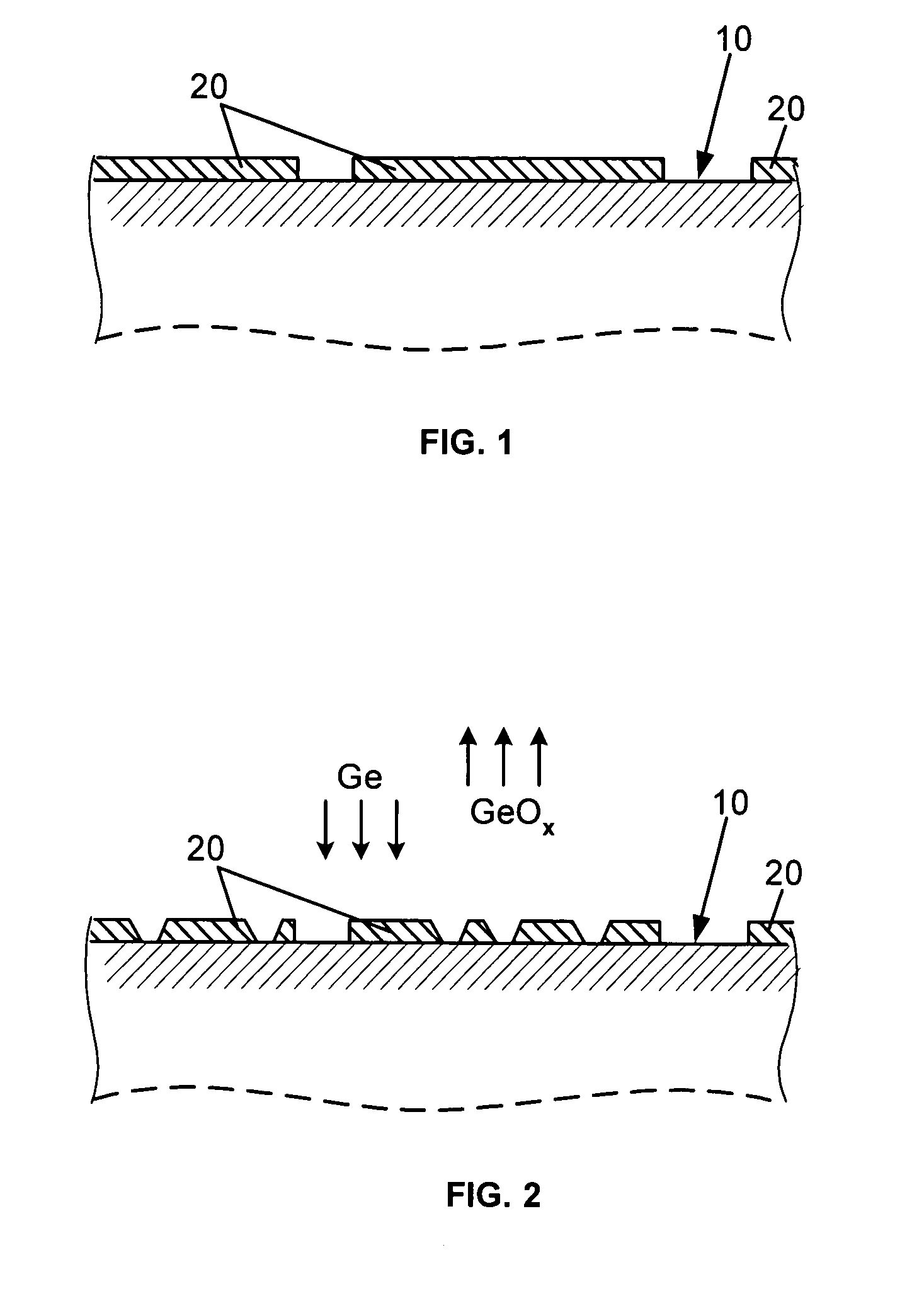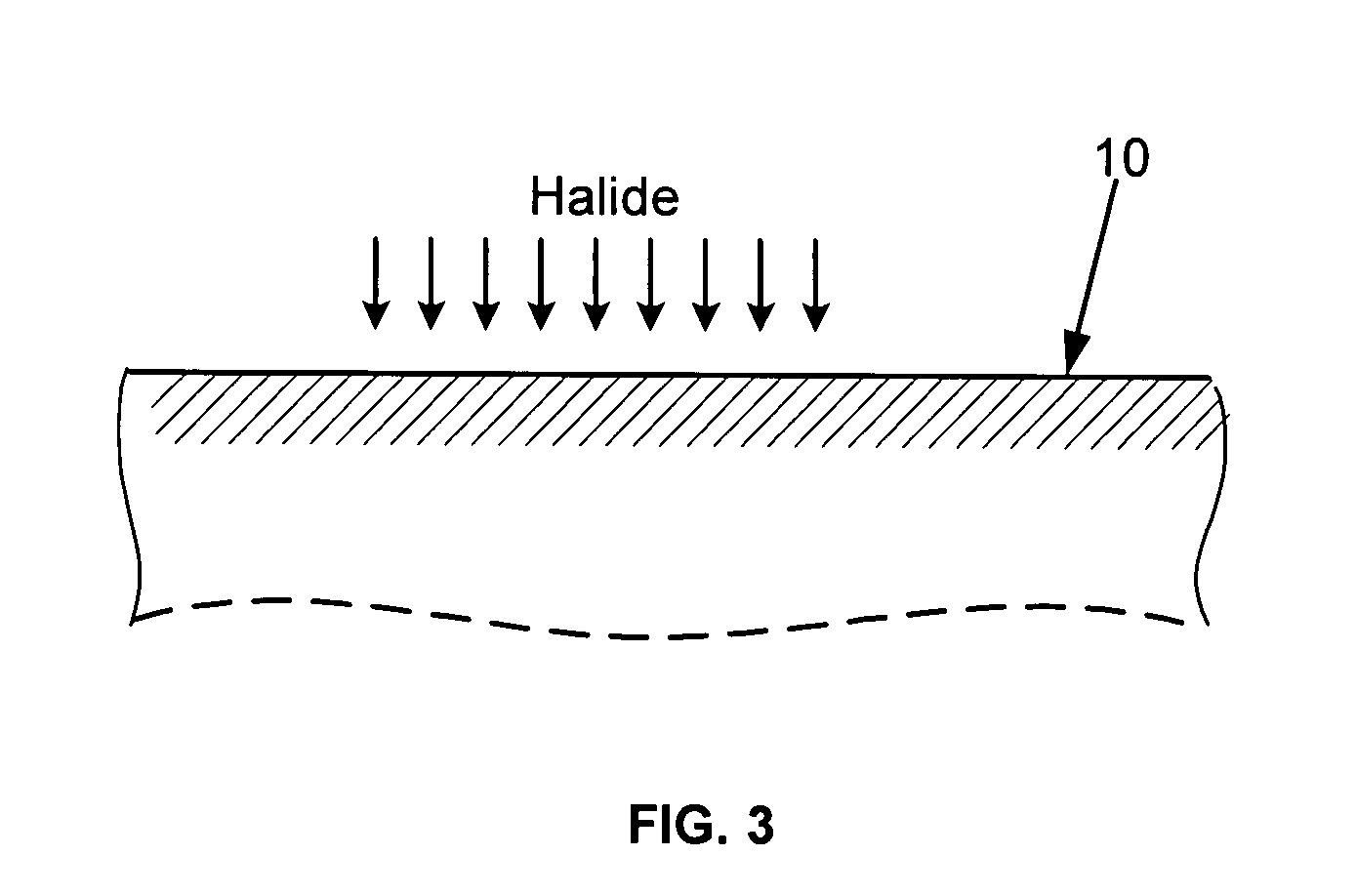Si surface cleaning for semiconductor circuits
a technology for semiconductor circuits and surfaces, applied in the field of electronic circuit fabrication, can solve the problems of atomically cleaning si surfaces, compromising performance, and facing ever more challenges
- Summary
- Abstract
- Description
- Claims
- Application Information
AI Technical Summary
Benefits of technology
Problems solved by technology
Method used
Image
Examples
Embodiment Construction
[0012]It well known in the electronics art that depositing epitaxial layers is often necessary during the fabrication of semiconductor circuits. As scaling of circuit components to ever smaller sizes continues, and inclusion of optical devices into circuit chips takes place, the desire for epitaxial deposition at relatively low temperatures increases. The lower the temperature of the epitaxial deposition may be, the more flexibility one has for integrating the fabrication process flow. The reason for this is that a lower temperature process may be less damaging to structures already in place at the time of the epitaxy, or growth. The terms “epitaxial relation”, “epitaxially”, “epitaxy”, “epi”, “epitaxial growth” etc. carry their customary usage: meaning that a layer is formed on a platform, which layer has the same symmetry and crystalline orientation as the platform itself.
[0013]Successful epitaxial deposition requires a clean surface on which the epitaxial growth can take place. I...
PUM
 Login to View More
Login to View More Abstract
Description
Claims
Application Information
 Login to View More
Login to View More - R&D
- Intellectual Property
- Life Sciences
- Materials
- Tech Scout
- Unparalleled Data Quality
- Higher Quality Content
- 60% Fewer Hallucinations
Browse by: Latest US Patents, China's latest patents, Technical Efficacy Thesaurus, Application Domain, Technology Topic, Popular Technical Reports.
© 2025 PatSnap. All rights reserved.Legal|Privacy policy|Modern Slavery Act Transparency Statement|Sitemap|About US| Contact US: help@patsnap.com



